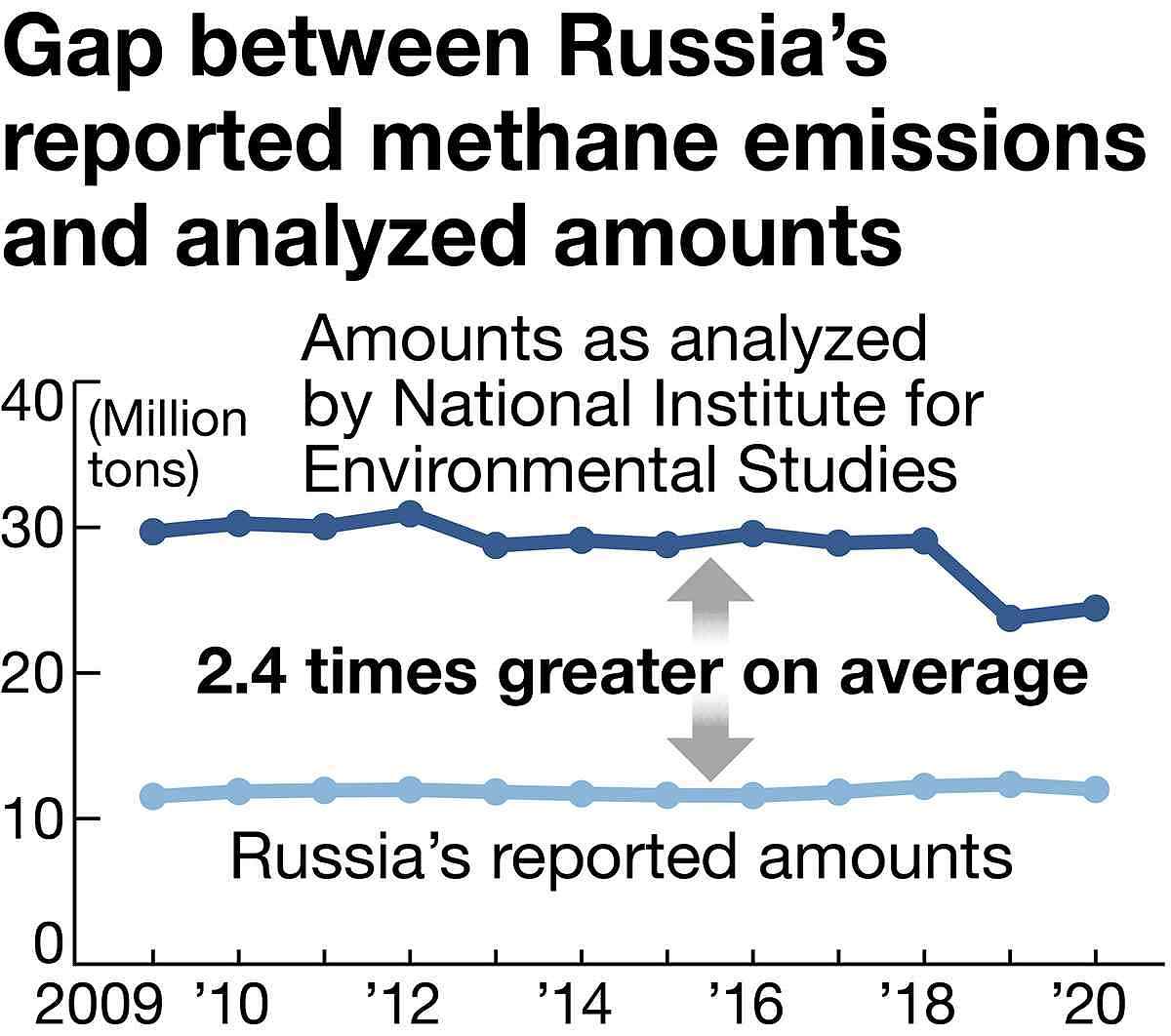Russian Methane Emissions ‘Greater Than It Reported’; Japanese Satellite Detected Higher Levels In 2009-20

16:19 JST, November 14, 2024
BAKU — Russia’s annual methane emissions were 2.4 times greater than the country reported, Japan’s National Institute for Environmental Studies has found.
The findings, which indicate that the data released by Russia could be inaccurate, are planned to be announced soon at the 29th U.N. climate change conference, known as COP29, which is currently underway in Baku.
The research institute calculated emissions across areas of 100 to 400 square kilometers based on methane gas concentrations observed by the Japanese greenhouse gas observation satellite Ibuki from 2009 to 2020. It analyzed each country’s artificial emissions mainly from industrial sectors, such as fossil fuel extraction, as well as agricultural sectors, such as rice paddies and livestock production. Gas emitted naturally from wetlands and marshes was not included.
As a result, Russia’s annual emissions were estimated to range from about 24 million to 31 million tons, with an average of about 29 million tons. Moscow has reported the figure as about 12 million tons every year. According to the analysis, Russia’s methane was emitted mainly from the extraction and transportation of oil and natural gas, and the discrepancy in the figures is likely to be related to this sector.
Methane has a greenhouse effect 27 to 30 times that of carbon dioxide. For Japan and other major emitting countries, such as the United States, China, India and Brazil, there was no significant gap between the analyzed and self-reported amounts.
Each country has set greenhouse gas emission reduction targets based on the Paris Agreement, which is an international framework to combat global warming, and they report their emissions to the United Nations on a regular basis. As the importance of ensuring transparency in reporting the data has been increasing, Japan’s Environment Ministry intends to promote the satellite-based verification method at COP29 with the aim of making it an international standard.
"World" POPULAR ARTICLE
-

8 Japanese Nationals Stranded on Indonesia’s Sumatra Island
-

U.S. Senate Resolution Backs Japan, Condemns China’s Pressure
-

China to Impose Sanctions on Shigeru Iwasaki, Former Head of Japan’s Self-Defense Forces, Who Serves as Adviser to Taiwan’s Executive Branch
-

South Korea’s Top Court Dismisses Nippon Steel Appeal in Lawsuit over Requisitioned Worker
-

75% of Myanmar People Reject Army’s Political Involvement, According to Survey Conducted by Aid Organization
JN ACCESS RANKING
-

Tokyo Economic Security Forum to Hold Inaugural Meeting Amid Tense Global Environment
-

Keidanren Chairman Yoshinobu Tsutsui Visits Kashiwazaki-Kariwa Nuclear Power Plant; Inspects New Emergency Safety System
-

Imports of Rare Earths from China Facing Delays, May Be Caused by Deterioration of Japan-China Relations
-

University of Tokyo Professor Discusses Japanese Economic Security in Interview Ahead of Forum
-

Japan Pulls out of Vietnam Nuclear Project, Complicating Hanoi’s Power Plans


























